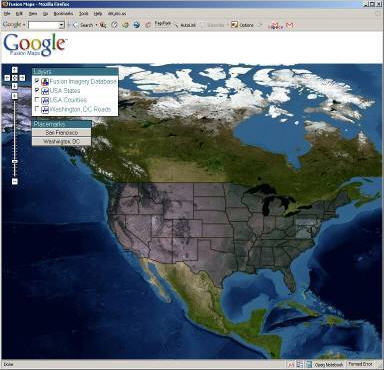Google Earth Enterprise extends to browsers

Google is extending its Earth Enterprise into the second dimension, allowing users to view their organization's geospatial data within a browser in 2D. "Organizations, such as an oil exploration company, depend on geospatial data to accomplish work. Many people in an organization need access to geospatial information, so allowing them to view 2D images in a browser, in addition to the downloadable Earth Enterprise client, provides more flexibility," said Noah Doyle, product manager for Google Enterprise geospatial products.
The Google Maps API also now allows administrators to embed a 2D geospatial data into Web applications and to mash up with external spreadsheets and other data sources, according to Doyle.
For example, 2D data from Google Earth can be mashed up with Excel data on to view the geographical distribution of customers and their product preferences overlaid with manufacturing locations. Similarly, a real estate company could distribute 2D images of properties for sale and overlay data about them.
The Google Earth Enterprise service handles data integration and data streaming for companies that need a behind-the-firewall solution for integrating, manipulating and viewing their geospatial data. The downloadable Google Earth client handles 3D viewing, printing, annotating and data authoring. Pricing for Google Earth Enterprise starts at $20,000 and includes the new 2D viewing via the browser and mashup capability.
In addition, the new release of Google Earth Enterprise, which is a good example of consumer technology adapted for the enterprise, integrates with multiple search services, has improved security and is faster in vector processing and server response, according to the company.
While Google's enterprise-oriented products are a very small fraction of the company's revenue, the company is continuing to make progress with its search appliances and office applications. Given a few more years, Google's enterprise division, which could include infrastructure-as-a-service offerings, will be more than a blip on the revenue statement.
